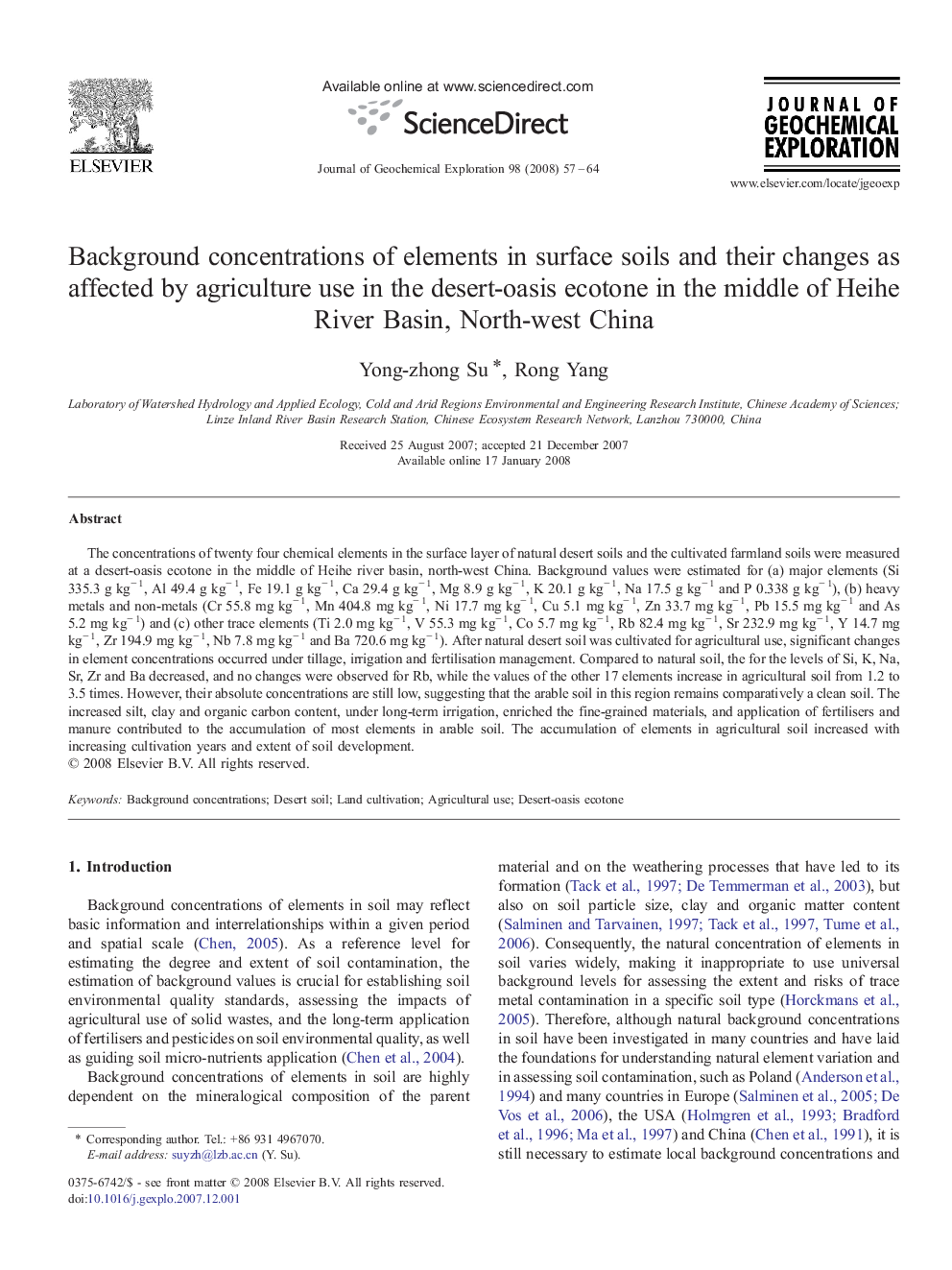| Article ID | Journal | Published Year | Pages | File Type |
|---|---|---|---|---|
| 4458260 | Journal of Geochemical Exploration | 2008 | 8 Pages |
The concentrations of twenty four chemical elements in the surface layer of natural desert soils and the cultivated farmland soils were measured at a desert-oasis ecotone in the middle of Heihe river basin, north-west China. Background values were estimated for (a) major elements (Si 335.3 g kg− 1, Al 49.4 g kg− 1, Fe 19.1 g kg− 1, Ca 29.4 g kg− 1, Mg 8.9 g kg− 1, K 20.1 g kg− 1, Na 17.5 g kg− 1 and P 0.338 g kg− 1), (b) heavy metals and non-metals (Cr 55.8 mg kg− 1, Mn 404.8 mg kg− 1, Ni 17.7 mg kg− 1, Cu 5.1 mg kg− 1, Zn 33.7 mg kg− 1, Pb 15.5 mg kg− 1 and As 5.2 mg kg− 1) and (c) other trace elements (Ti 2.0 mg kg− 1, V 55.3 mg kg− 1, Co 5.7 mg kg− 1, Rb 82.4 mg kg− 1, Sr 232.9 mg kg− 1, Y 14.7 mg kg− 1, Zr 194.9 mg kg− 1, Nb 7.8 mg kg− 1 and Ba 720.6 mg kg− 1). After natural desert soil was cultivated for agricultural use, significant changes in element concentrations occurred under tillage, irrigation and fertilisation management. Compared to natural soil, the for the levels of Si, K, Na, Sr, Zr and Ba decreased, and no changes were observed for Rb, while the values of the other 17 elements increase in agricultural soil from 1.2 to 3.5 times. However, their absolute concentrations are still low, suggesting that the arable soil in this region remains comparatively a clean soil. The increased silt, clay and organic carbon content, under long-term irrigation, enriched the fine-grained materials, and application of fertilisers and manure contributed to the accumulation of most elements in arable soil. The accumulation of elements in agricultural soil increased with increasing cultivation years and extent of soil development.
